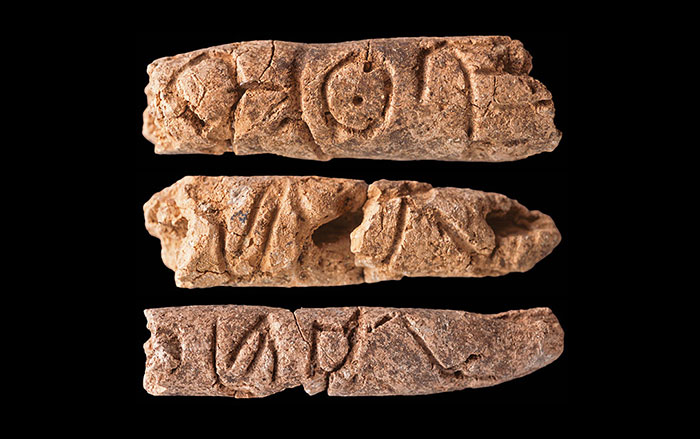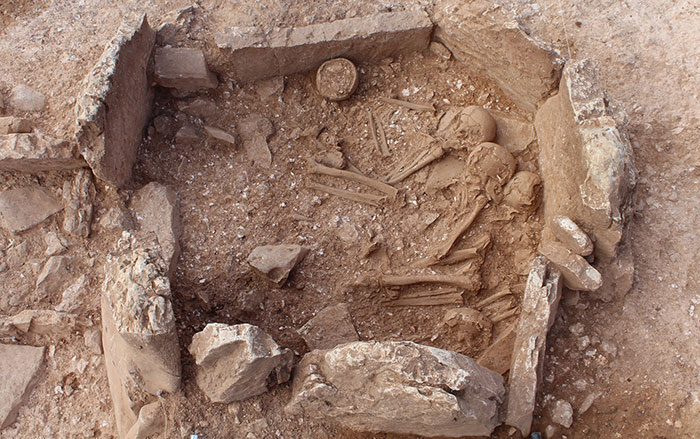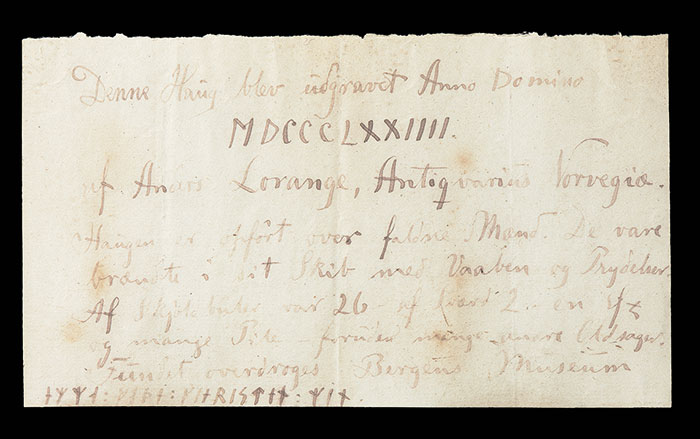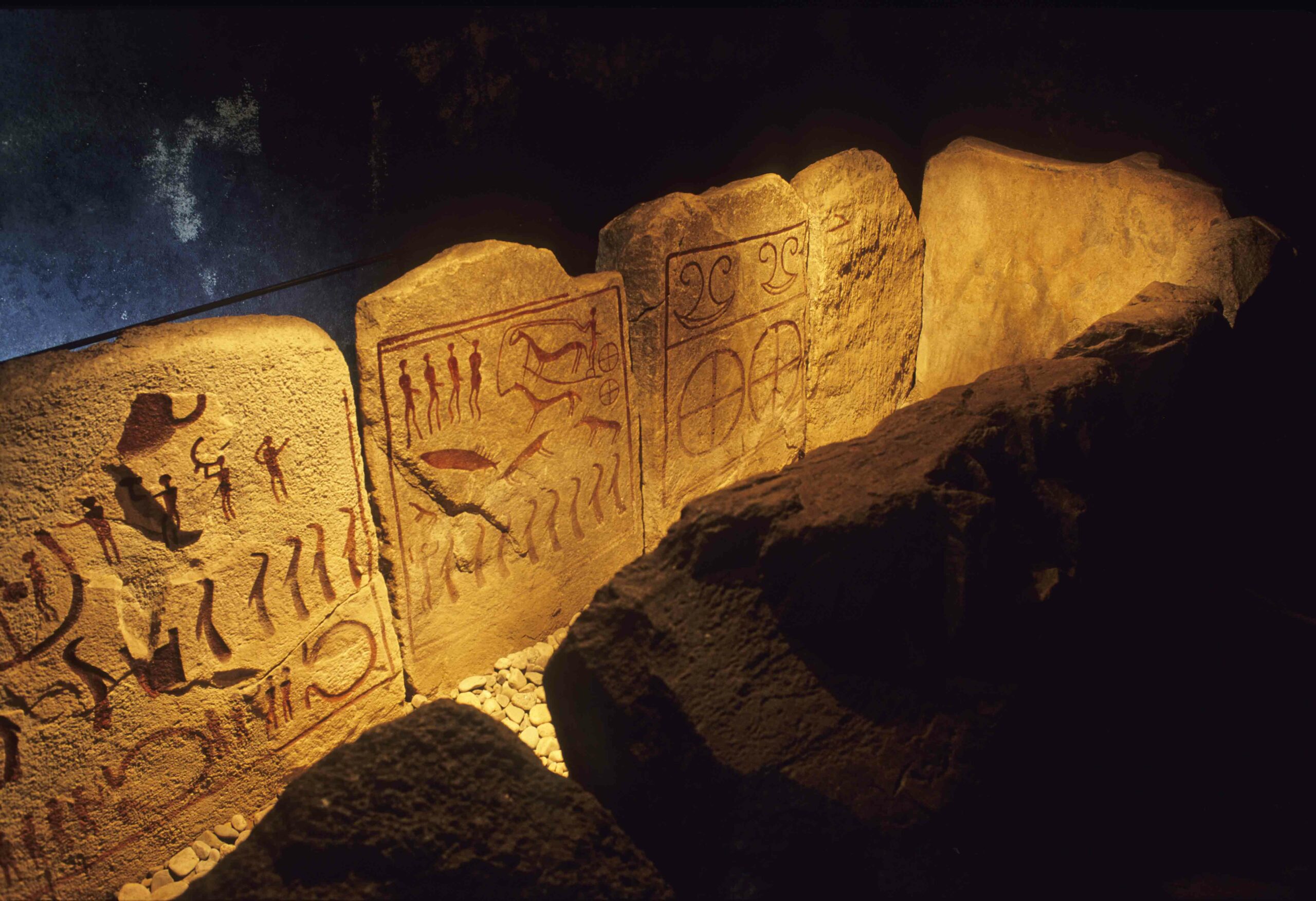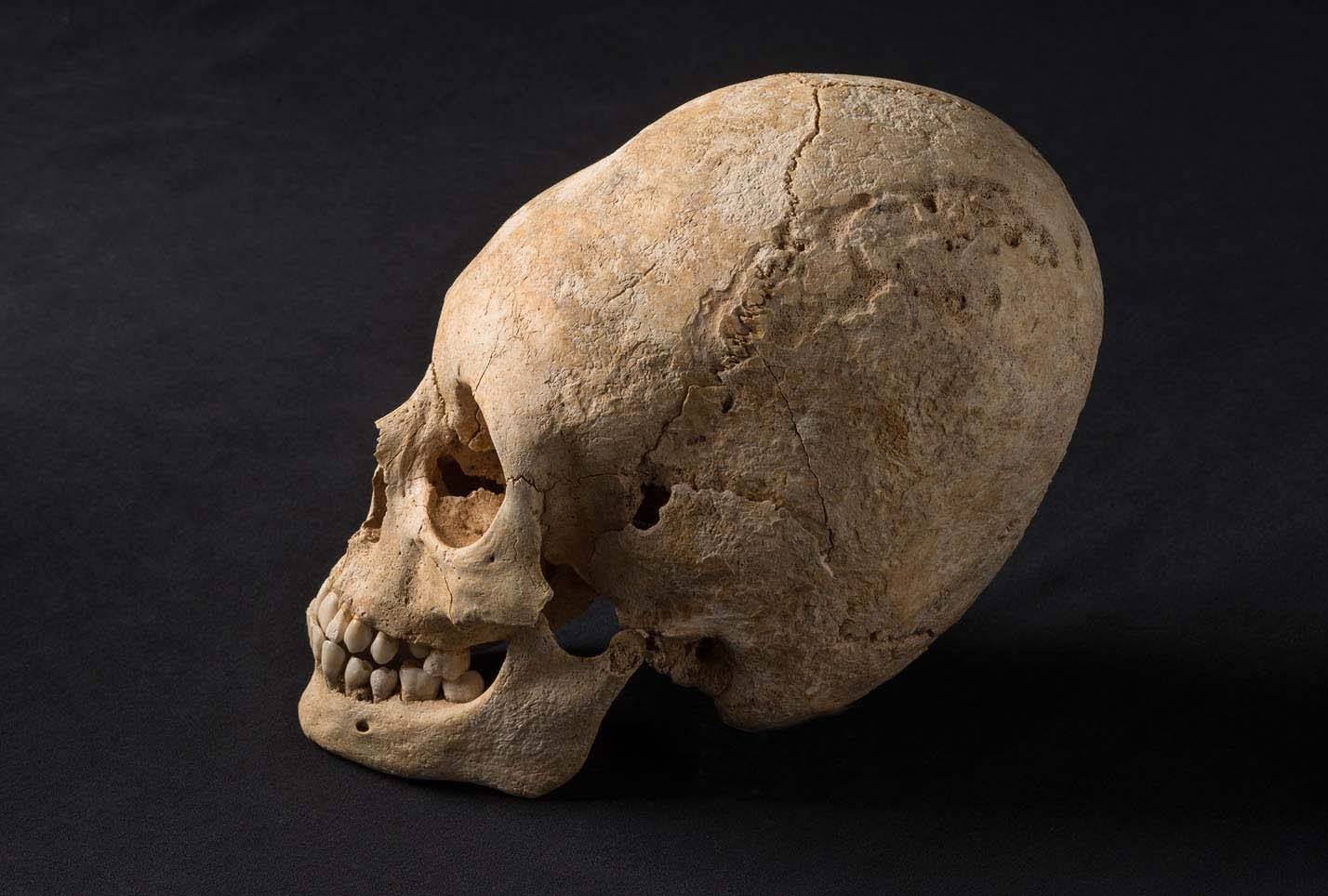
ALSACE, FRANCE—In a necropolis containing 38 tombs that were used over a period of more than 4,000 years, archaeologist Philippe Lefranc uncovered the 1,650-year-old remains of a woman whose head had been flattened and deformed during childhood. “The deformation of the skull with the help of bandages (narrow strips of cloth) and small boards is a practice coming from central Asia. It was popularized by the Huns and adopted by many German people,” he said. Such deformed skulls are usually seen in burials containing grave goods associated with the wealthy. This woman had been buried with gold pins, chatelaines, pearls, a comb made of a stag antler, and an imported bronze mirror.


